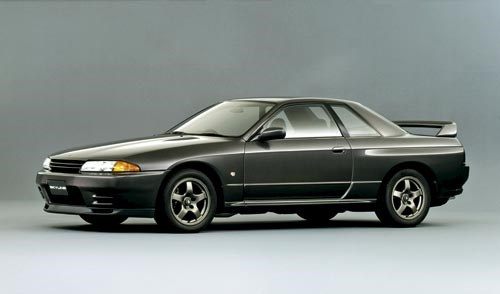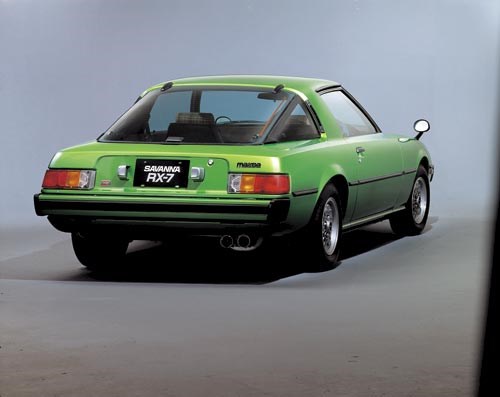Japanese car buyers guide-Pt.1







|

|

|
We look back at our 2013 summary of the Japanese used car market...
From Unique Cars magazine #352
Japanese Buyers Guide 2013
It’s taking time, but a number of Japanese cars are appreciating as once-common models rapidly disappear from Australian roads.
Japanese imports during the 1960s changed Australian automotive expectations and forced local manufacturers to significantly improve the type and quality of product they offered.
Although early Japanese models sold here in significant numbers, surviving cars in useable condition have become difficult to find. Even vehicles that have been recognised for design significance are well on their way to extinction and survivors growing in value.
A fierce auction battle at the 2012 Motorex display saw a ‘survivor’ Mazda R100 sell for almost $40,000 but finding an S800 Honda hatchback in anything better than ordinary condition has become virtually impossible.
At the opposite end of the value scale a scarce Toyota 2000GT sold overseas recently for more than $1 million – the first Japanese production car to crack the coveted seven digits (see Auction Action).
This situation can be at least partially attributed to an environment of prejudice. During the 1980s and even 1990s it was difficult to find people who were prepared to maintain a Toyota Corona and Datsun Bluebird in the same way British enthusiasts lavished affection on their Morris Minors or early Ford Cortinas.
The ‘second-wave’ of Japanese performance models came during the 1990s via a massive influx of ‘grey import’ used cars. Ongoing popularity with younger owners has prolonged the survival of models like Nissan’s R31-33 Skylines and Silvia turbos, high-performance Hondas and a variety of Toyota sedans and coupes. However, just a handful of models from this era have the potential to appreciate in value.
Even a market packed with Tommi Makinen Mitsubishi Evos, STi-spec WRXs and the odd Group A Celica does little to maintain excitement among people who seem fixated on newer, better and faster. Preserving something that once represented the pinnacle of ownership aspiration has become ‘just so last century.’
Keeping most early Japanese models on the road isn’t difficult. Datsun’s 240-260Z sports cars, 1600 and 180B sedans, most rotary Mazdas, Subarus and 1960s-80s Toyotas are served by clubs and aftermarket spares suppliers who help maintain and update hundreds of surviving cars.
Japan continues to produce models that warrant long-term survival. The Subaru BRZ/Toyota 86 duo are affordable and confirm that driving for its own sake remains permissible. Nissan’s most recent GT-R takes the fight to Porsche and the Italian brands with its ability to combine supercar performance and practicality.
However, without an Enzo, Ferdinand or Ferruccio in its background even this most competent of Japanese performance cars may struggle to maintain long-term desirability. And that is a real shame.
How to read Market Reviews
Market Review assessments focus on market movements for various vehicles during the past 12 months and provide, where possible, guidance on realistic pricing for different models available.
The average values shown at the end of each vehicle review are based on surveys of cars offered for sale privately and through licensed dealers in metropolitan markets throughout Australia and on the internet.
Note that the number in brackets following each average price represents the number of vehicles surveyed. Any average based on fewer than 20 vehicles is not necessarily representative of the market position of that particular model at the time.
Where I/D (Insufficient Data) or N/S (None Surveyed) is shown against a model designation, it indicates that no vehicles fitting the description were found during the survey period for this 2013 Buyers Guide.
CONDITION 1
BODYWORK Should be free of dents, rust or obvious repairs. Minor stone chips are permissible, major blemishes or mis-matched paintwork are not. Brightwork must be complete and show no evidence of damage.
INTERIOR Seats should be covered in original-pattern material free of rips or other damage, floor covering complete, clean and of correct material, headlining clean. Dash – especially where timber or veneer is used – should be free of cracks or discolouration.
ENGINE BAY Clean with no water, oil, fuel or battery leaks. Hoses and belts need to be in sound condition. The correct engine or one which was optional to the model should be fitted. Authentic components are a must if the car is to be upgraded to concours standard.
UNDERBODY No dents or damage to underseal, exhaust system complete and undamaged, no oil leaks from the differential, transmission or shock absorbers. All suspension components should be in good working order.
WHEELS & TYRES Original wheels with correct hubcaps or aftermarket wheels in keeping with vehicle style and age should be fitted. Tyres need to be correct size and speed rating, with at least 50 percent original tread.
CONDITION 2
BODY No serious rust or large areas of body filler evident. Minor bubbling in non-structural areas permissible. Paint should be good quality but may show evidence of repairs, chips and scratches. Brightwork should be generally good, although areas of dulled or scratched chrome are likely.
INTERIOR Seats may have been re-covered but should be in good general condition. If the trim is original, areas of wear and broken stitching is likely. Floor coverings should be complete, carpets and hoodlining preferably to original pattern. Cleaning may be required.
ENGINE BAY Engine should be of original type although original engine is unlikely. No major fluid leaks or discolouration. Cleaning will be required.
UNDERBODY No serious damage, however scrapes and chipping likely. Minor oil leaks are common, exhaust should be complete and free from holes or burning around joints. Suspension components such as kingpins, ball joints and shock absorbers need to be roadworthy.
WHEELS & TYRES Wheels should be the original rims or legal-sized aftermarket units. Tyres should have at least legal tread depth left.
CONDITION 3
BODY Moderate rust is inevitable, although chassis, firewall and other structural areas should be sound. Minor body damage is common. Paint likely to be faded, with uneven colour. Body filler usually found in panels but unacceptable in structural areas. Brightwork should be basically complete and major components like the grille must be fitted. Re-chroming or polishing of most parts will be required.
INTERIOR Seats need to be structurally sound but will normally need re-covering. Floor coverings likely to be damaged or missing. Door trims should be fitted but may need replacement. Vinyl dashboard tops usually cracked or warped.
ENGINE BAY The engine should run but work will be needed, with the engine bay likely to be dirty and oil stained. Hoses and fuel lines may need replacement for the vehicle to be reliable.
UNDERBODY Will show signs of neglect and damage (dents, stone damage, etc) but should be free of major rust. Chassis and structural members need to be straight. Suspension components and exhaust will usually need replacement.
WHEELS & TYRES Wheels should be free of major damage, but tyres will normally need replacement.
CONCOURS Vehicles in genuine concours condition will be completely original or rebuilt to the highest standards. Generally they are better than when new. Some cleaning or replacement of minor components may be required but anything more than minor blemishes will significantly reduce the car’s chances of success.
Cars with the potential to achieve Gold standard (90 percent or better) in open judging can cost 50 percent or more than Condition One examples.
Disclaimer
The author and publisher have made every effort to ensure the accuracy of the 2013 Australian Car Buyers Guide, but we do not accept responsibility for any loss or inconvenience caused by errors or omissions.
Values are subject to change due to social, political or economic circumstances within Australia or elsewhere. Rising fuel prices are a factor that will accelerate depreciation of larger-engined cars and enhance demand for economical models.
To determine the value of a specific vehicle, inspection by an appropriately qualified specialist is strongly recommended.
Unique Cars magazine Value Guides
Sell your car for free right here
Get your monthly fix of news, reviews and stories on the greatest cars and minds in the automotive world.
Subscribe

.jpg)










.jpg)

